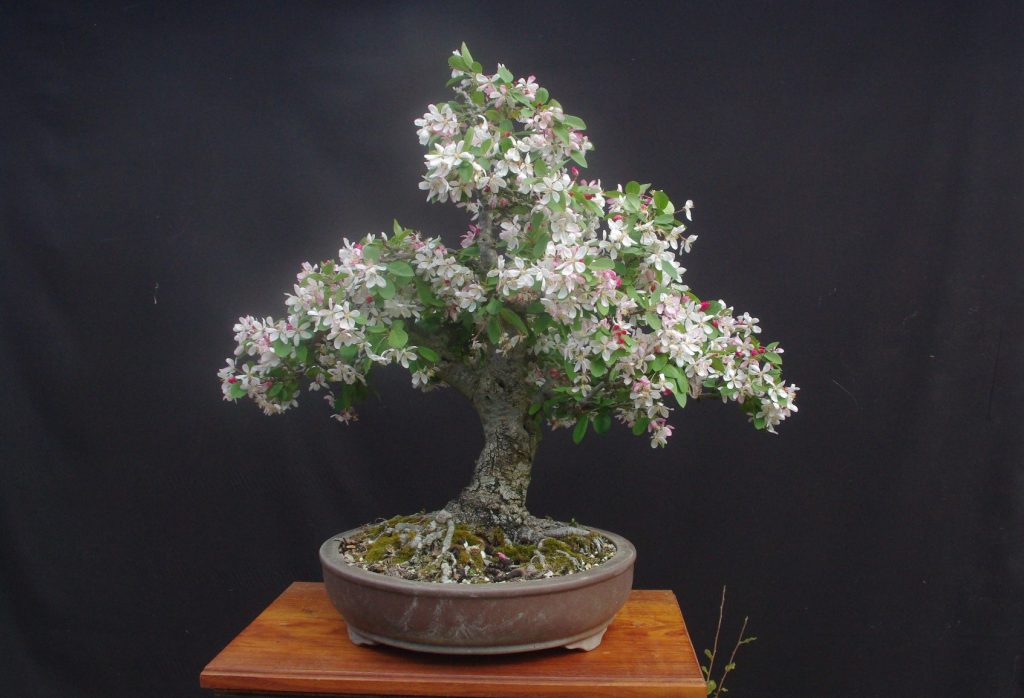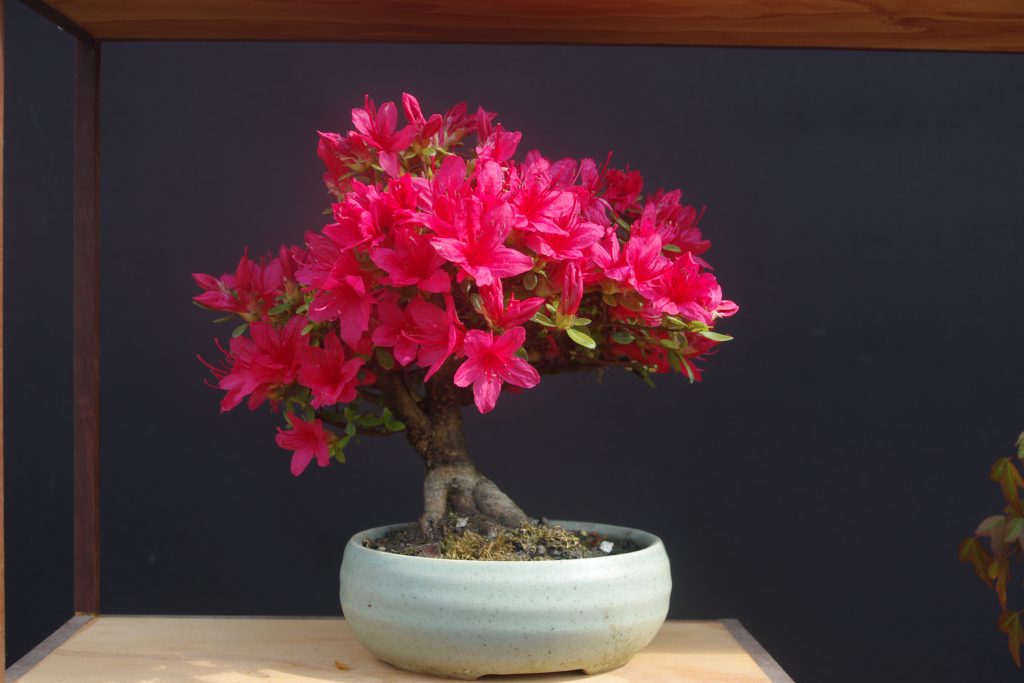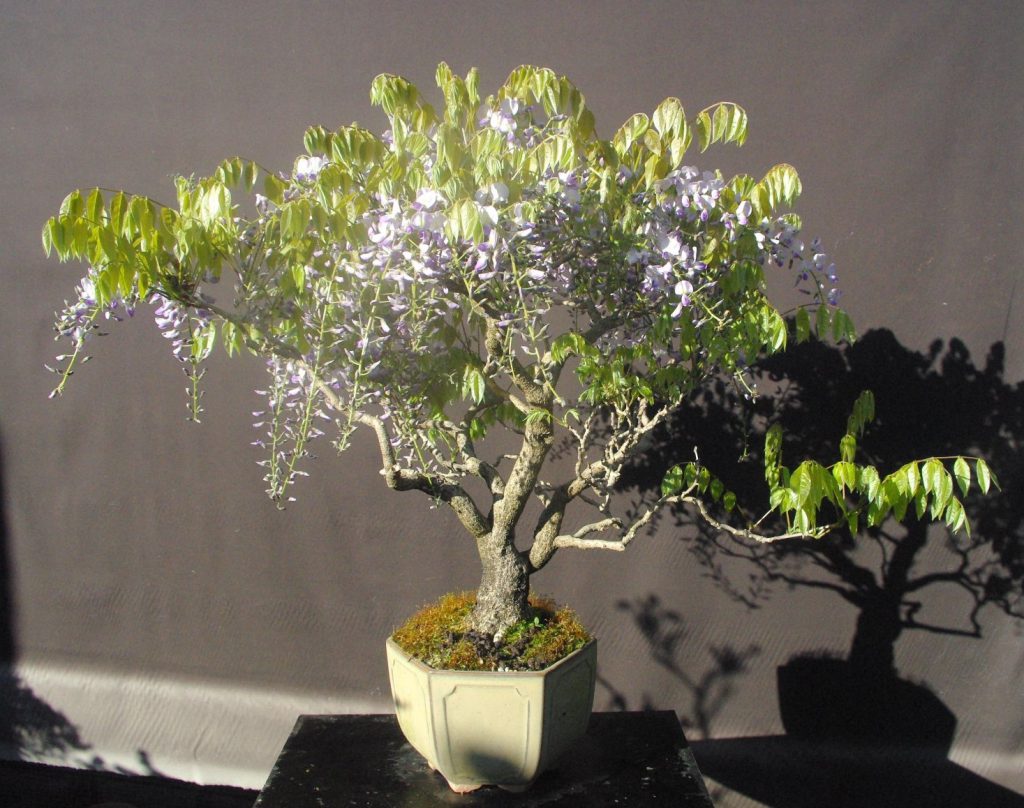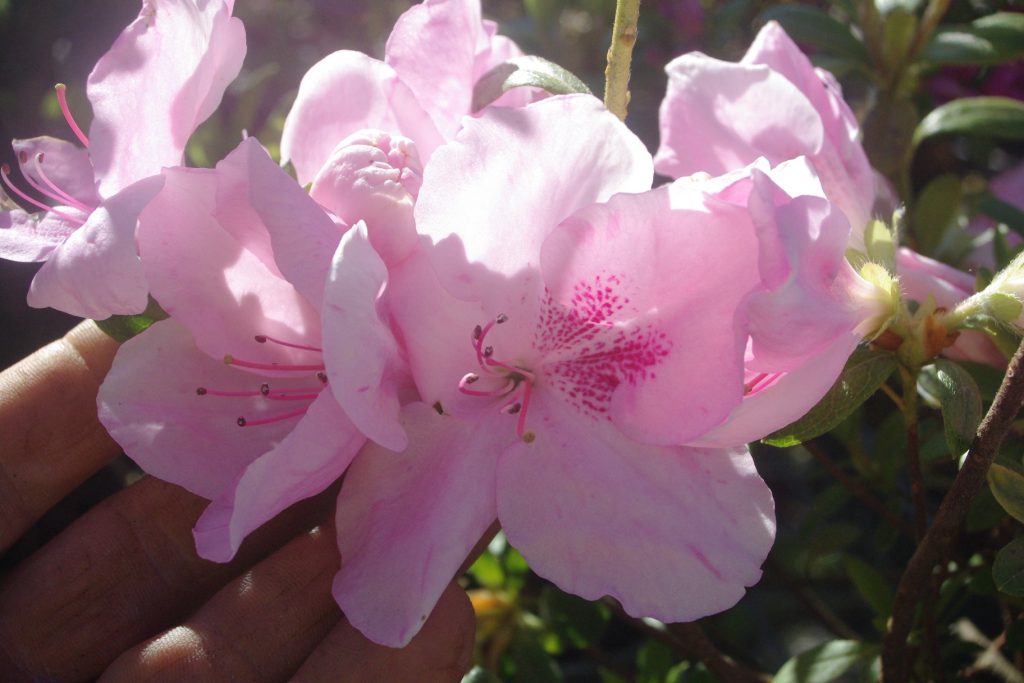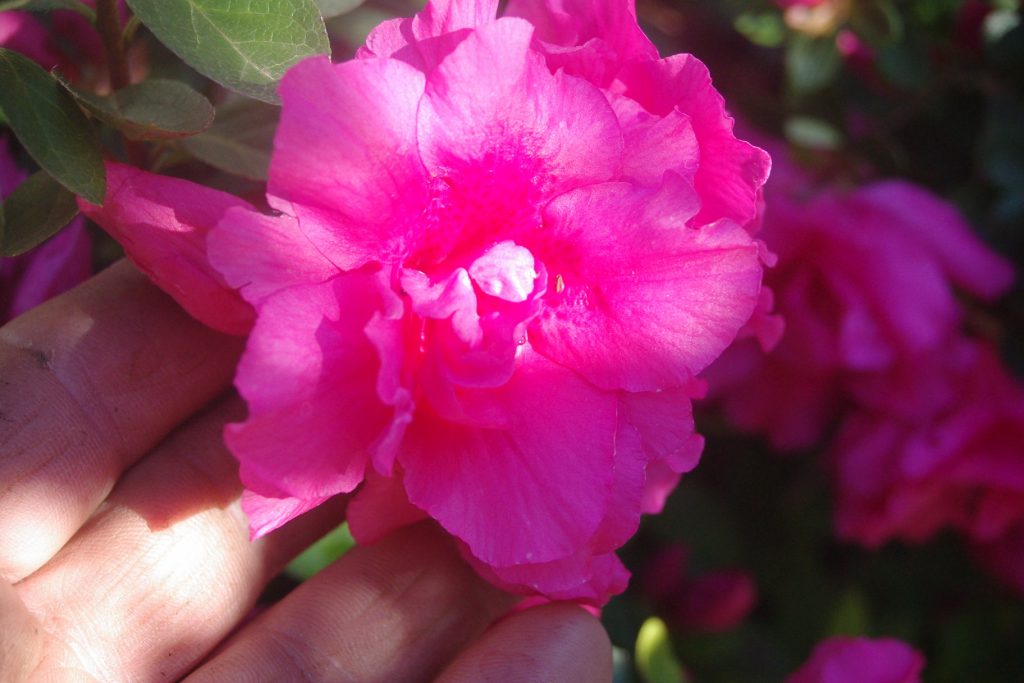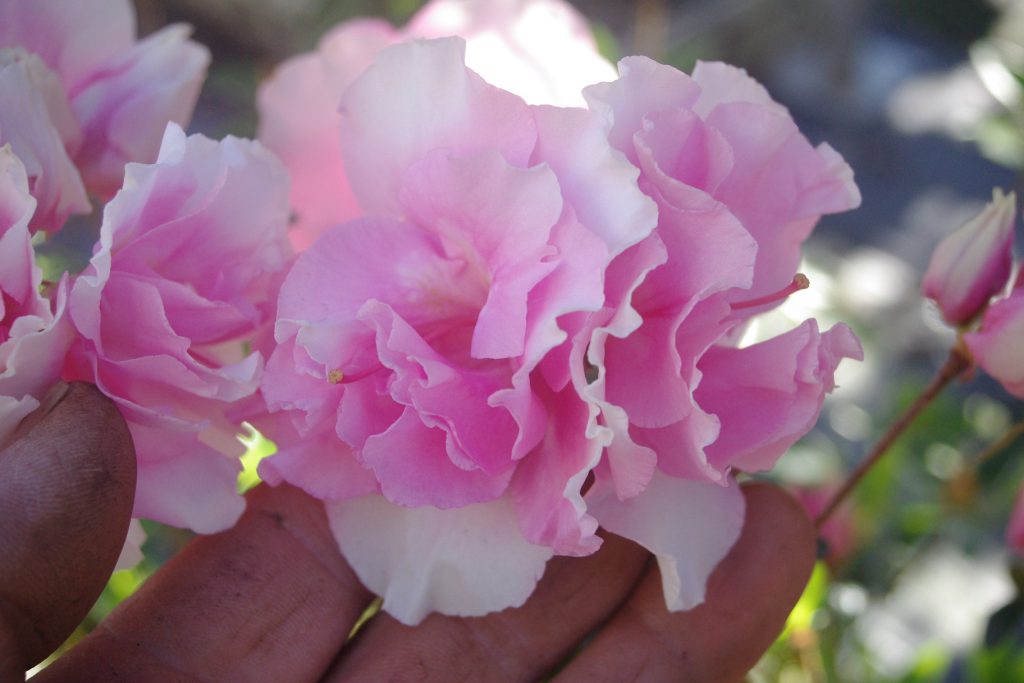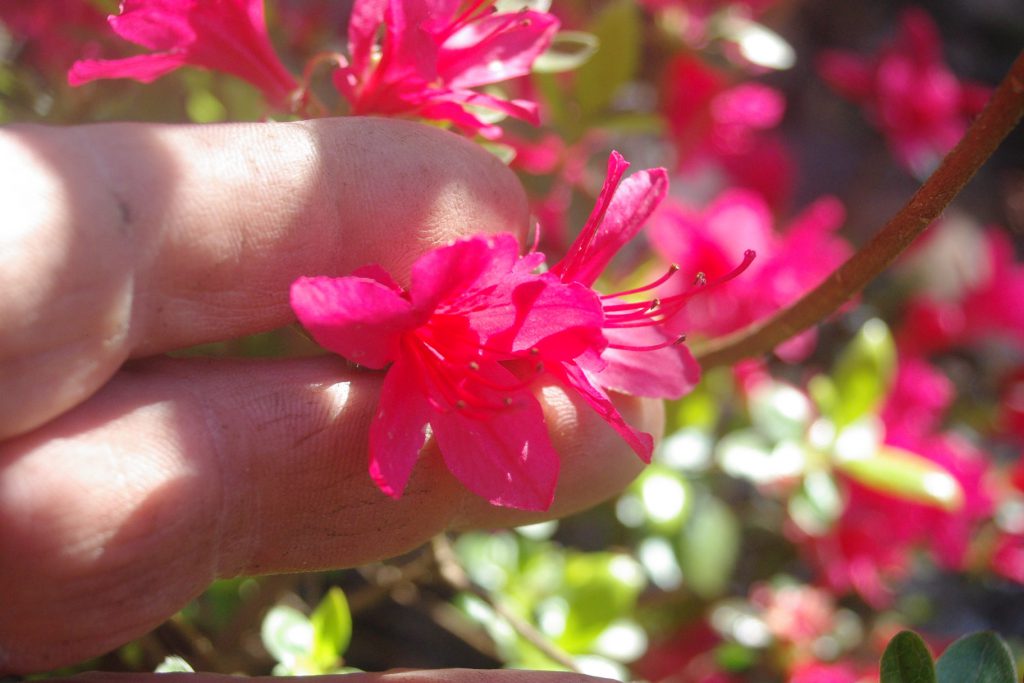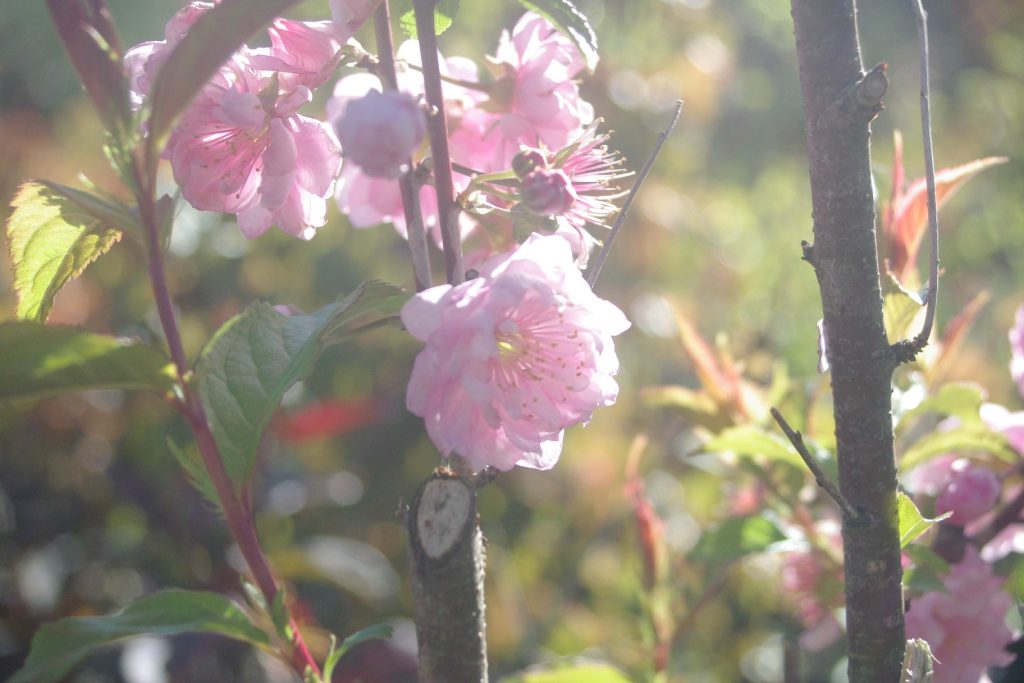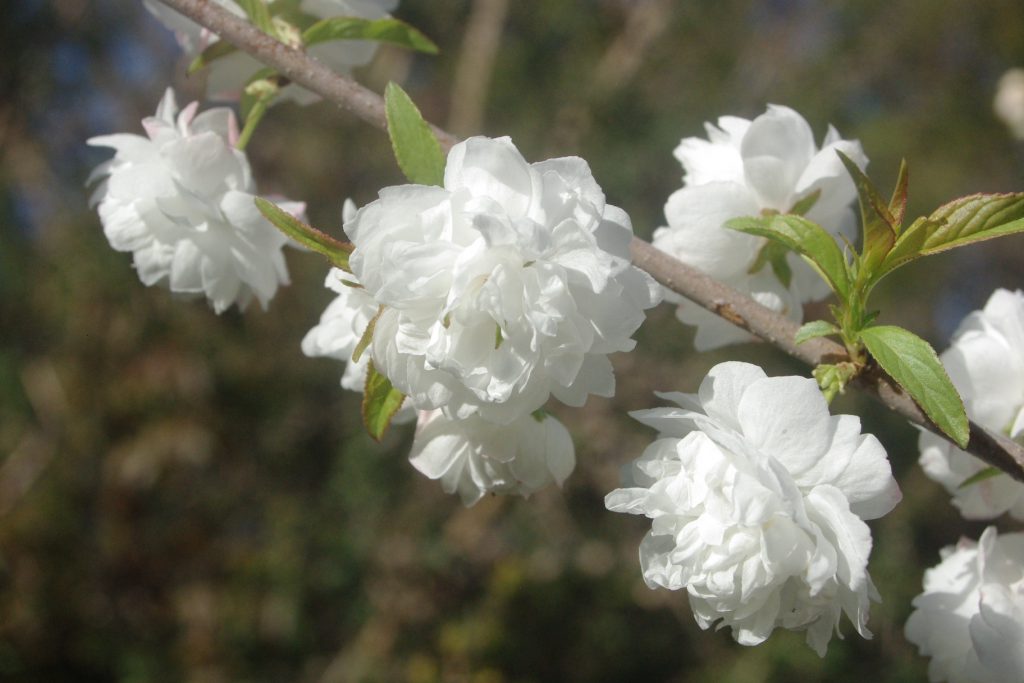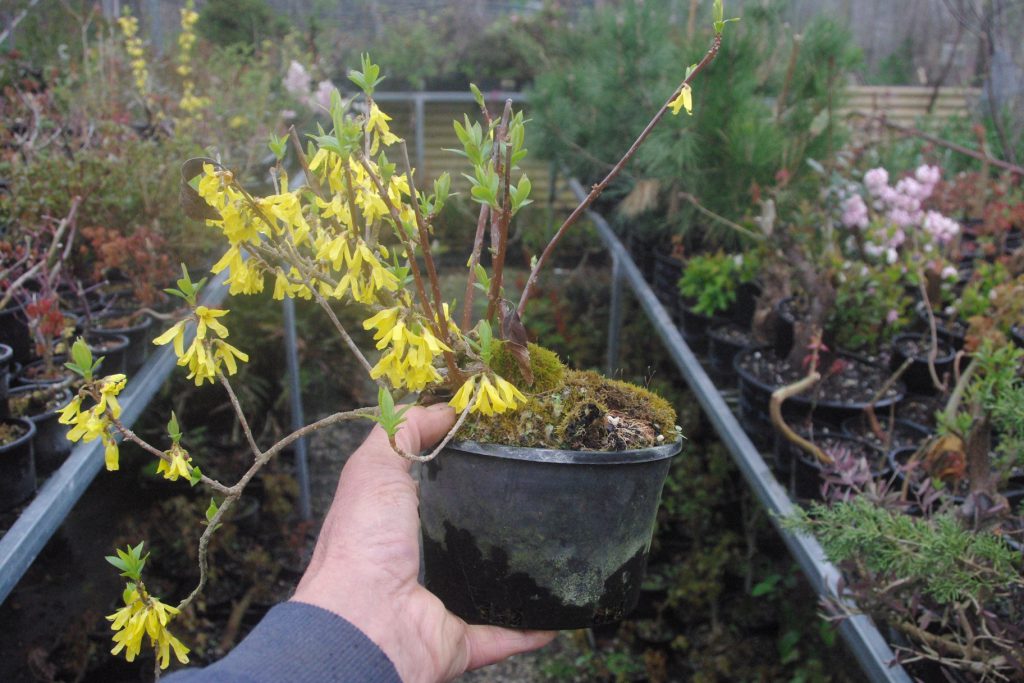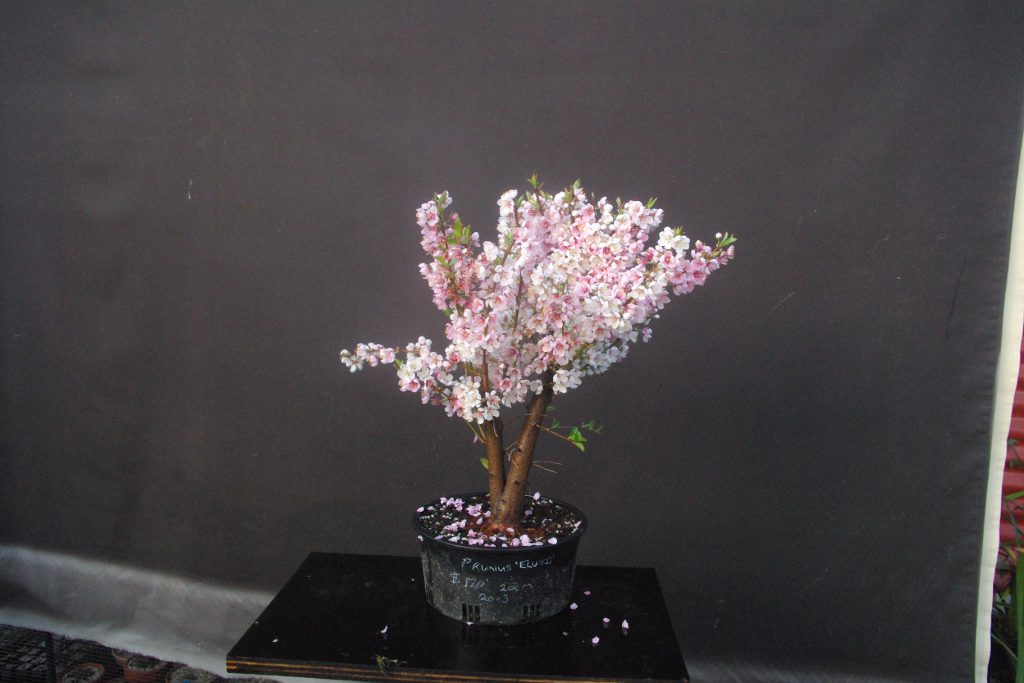We can use quite a few flowering species to brighten the spring bonsai benches.
Crab apples are a traditional favourite bonsai as they are hardy and easy to keep as bonsai. It is also relatively easy to get them to flower. I’ve had this ‘floribunda’ cultivar for close on 40 years since one of my early mentors showed me how she grafted flowering shoots onto seedling root stocks to get an almost instant flowering bonsai.
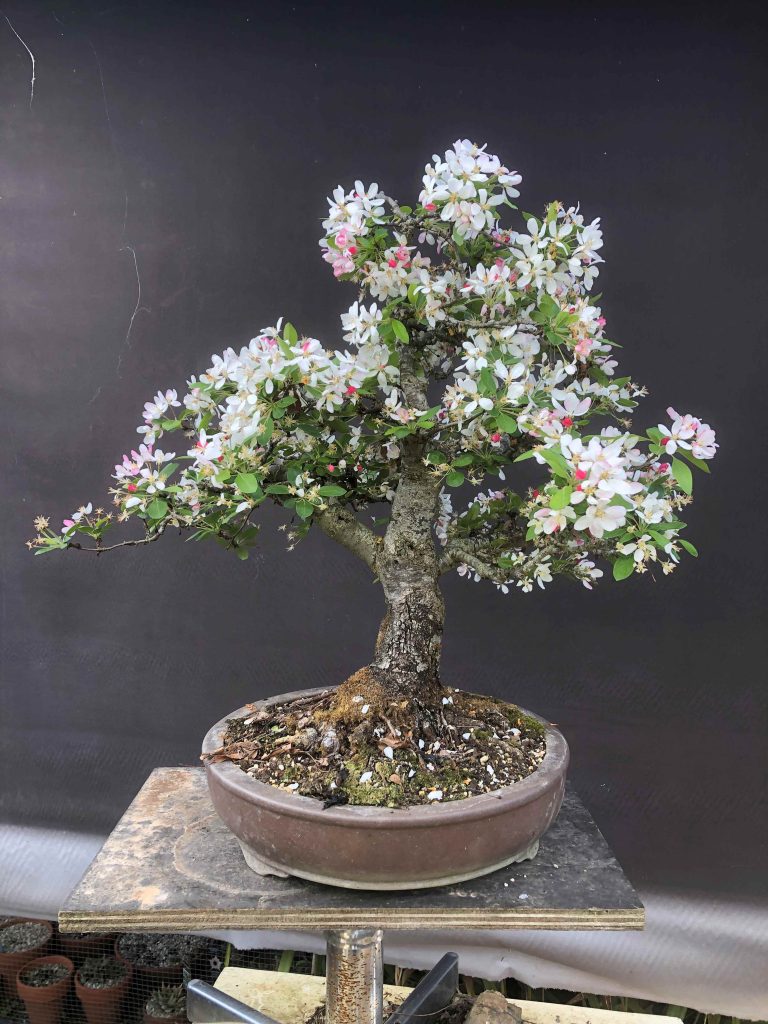
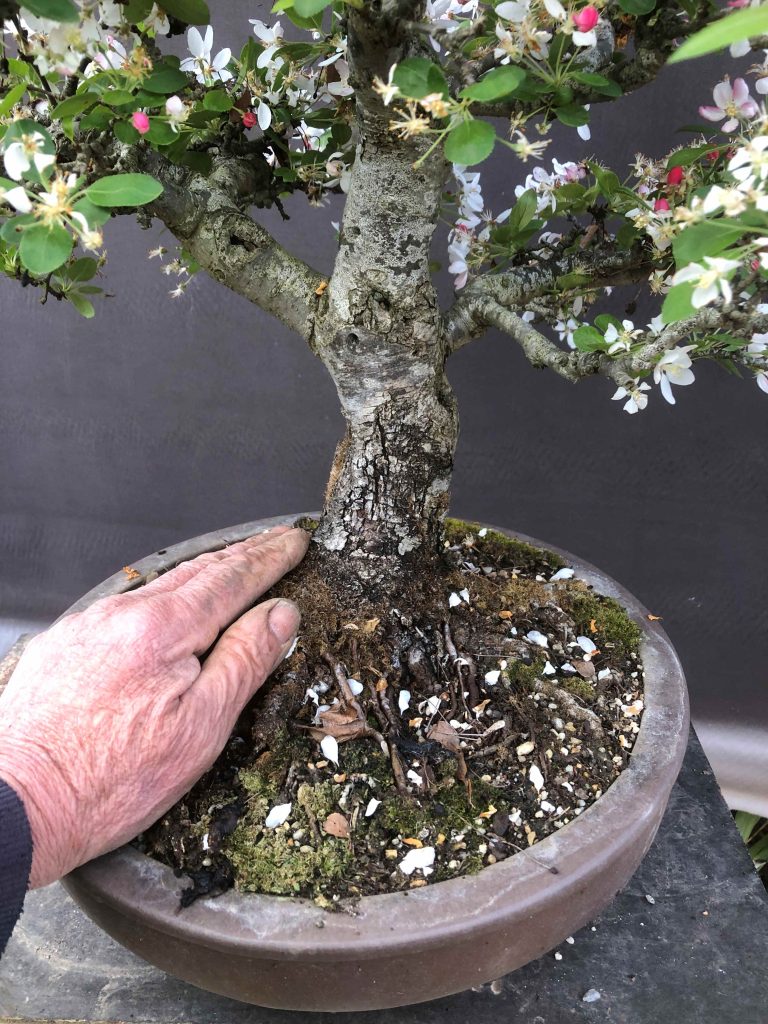

Azaleas are another traditional bonsai species though I read recently that azaleas were only recognised as bonsai in Japan relatively recently. Before that they were regarded as just flowering pot plants. The majority of azaleas in Australia are from the ‘Indica’ hybrids. These flower relatively early in spring. Mine have started opening flowers in mid September. In Japan, ‘Satsuki’ azaleas are more popular. Satsukis flower later in spring and have some spectacularly coloured flowers. Check out Bonsai Art for the best range of Satsuki azalea varieties in Australia – https://bonsaiart.com.au/satsuki-azalea-stock-list/
Azaleas are relatively slow growing so it takes years for an azalea bonsai to develop a thick, impressive trunk. Most of my azalea bonsai have been dug from older gardens when the owners were renovating the garden bends or extending the house. Fortunately azaleas transplant very easily at any time of the year. here are a couple of my azalea bonsai.
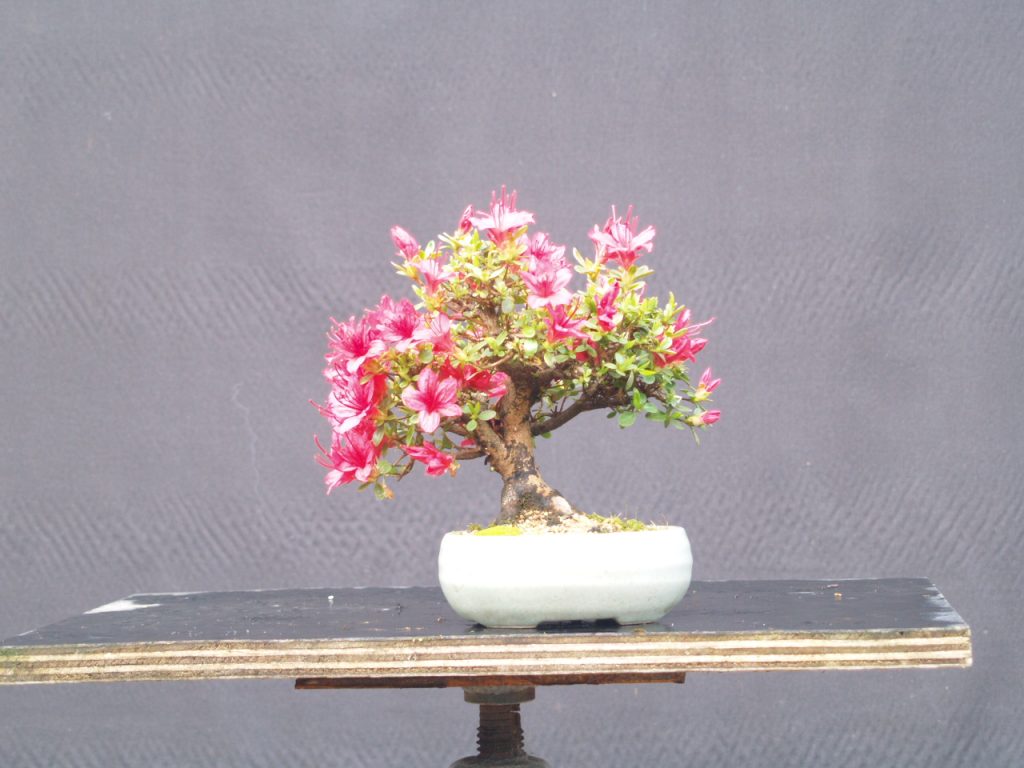
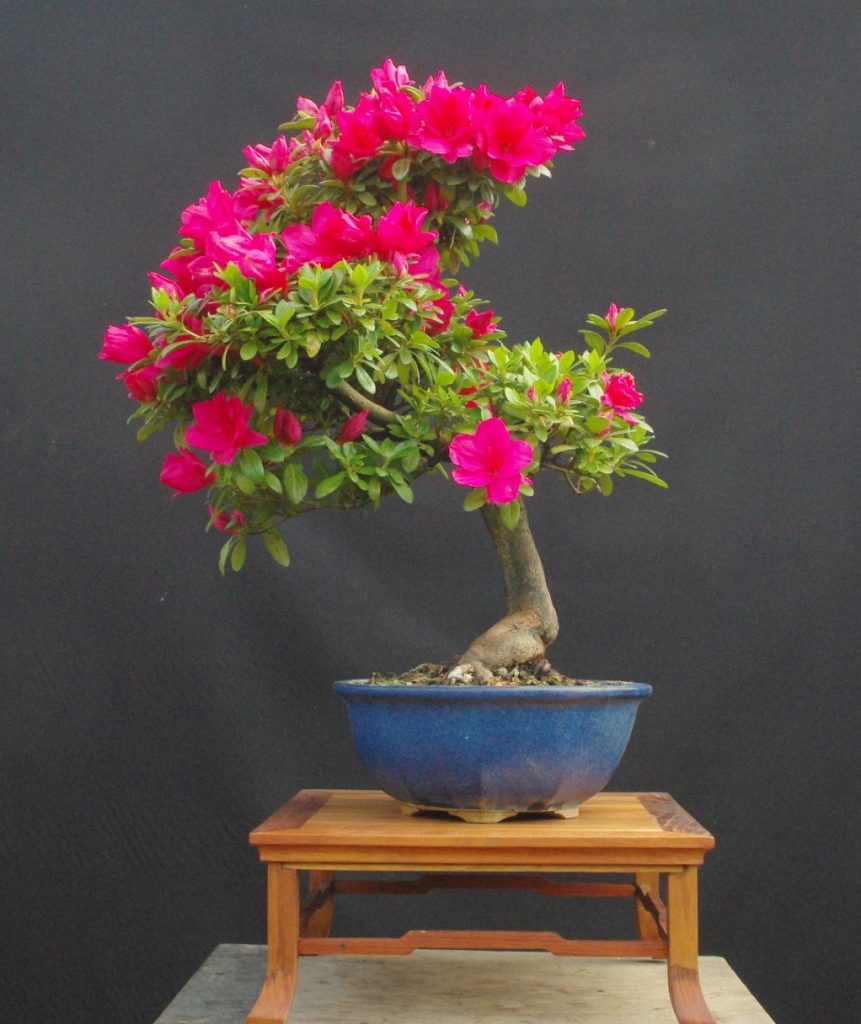
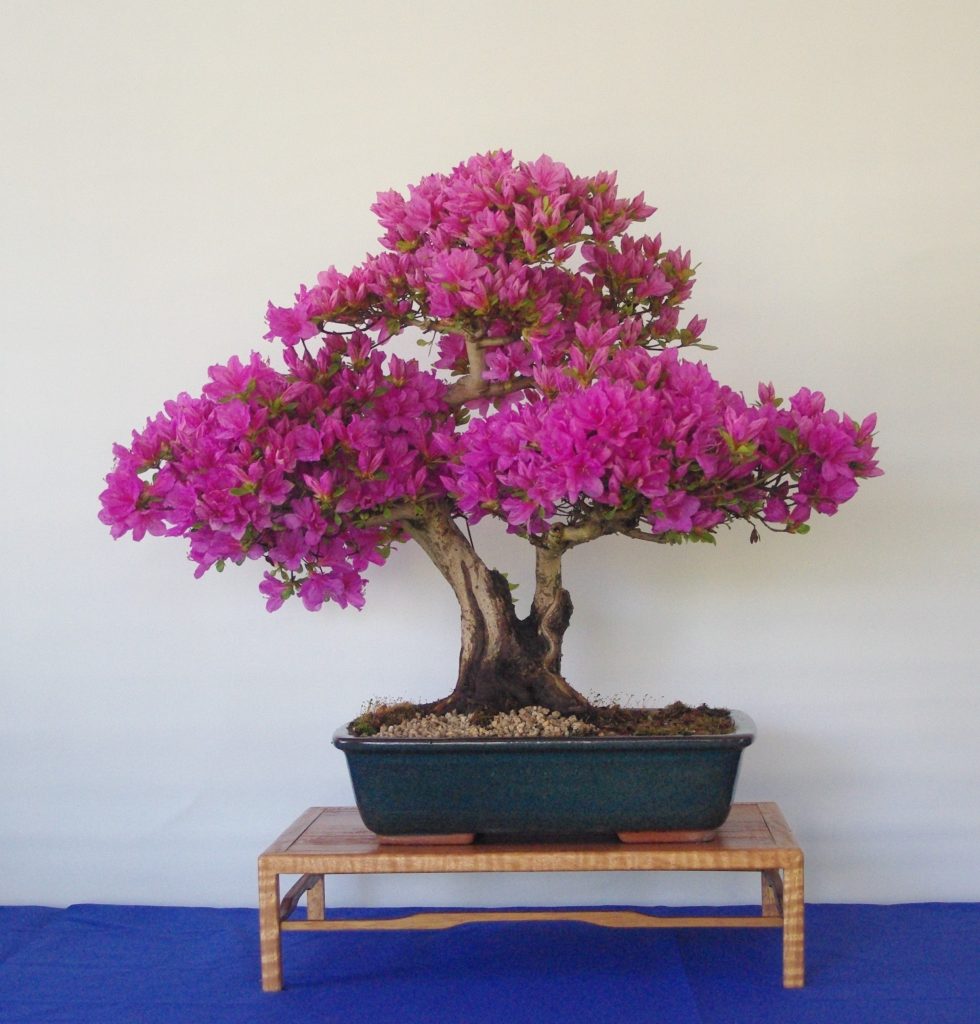
The Prunus family is another large group of species which flower in spring and many adapt easily to bonsai.
Plums are hardy and easily sourced from many nurseries. Some plums have become environmental weeds and can be found growing on roadsides and farmland. Most feral plums have straight, vertical trunks but occasionally you can find a really good trunk to collect and convert to bonsai.
Flowering cherries are a traditional favourite too but not quite as easy to maintain – or to keep them flowering well as cherries suffer from a range of pests and diseases. I’ve been transplanting seedling cherries from our garden bends into pots for those who would like to tackle flowering cherry as bonsai.
Prunus mume is much less well known here in Australia. It is sometimes known as flowering Japanese apricot. Flowers open from mid winter and are very fragrant. Generally hard to find but Shibui Bonsai has smaller cutting grown Prunus mume in 11 cm pots from $20
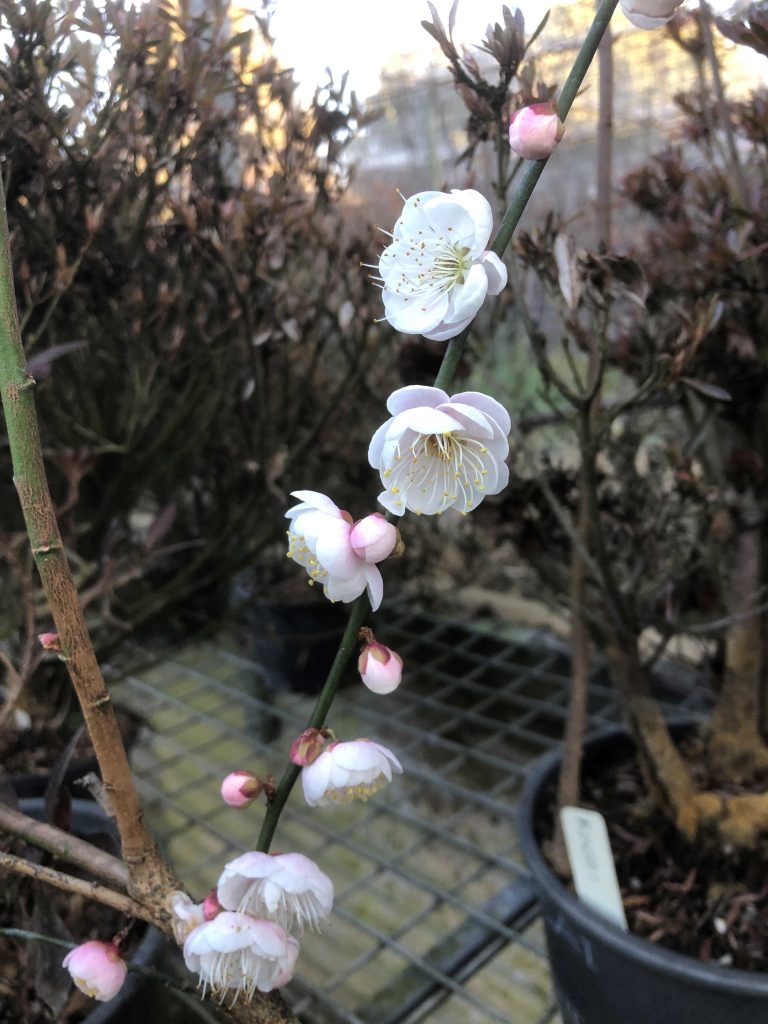
Japanese flowering Quince – AKA Chaenomeles were once popular as hardy garden shrubs that flower in late winter before the leaves emerge. Look for them in older gardens. Flowers in white, red and pinks. Flowering quince are used as bonsai but rarely develop thick tree like trunks but they can put on an impressive flower show in that dreary late winter period. Shibui Bonsai has limited numbers of several different coloured flowering quince as well as the much rarer ‘Chojubai’ dwarf flowering quince with orange flowers.

